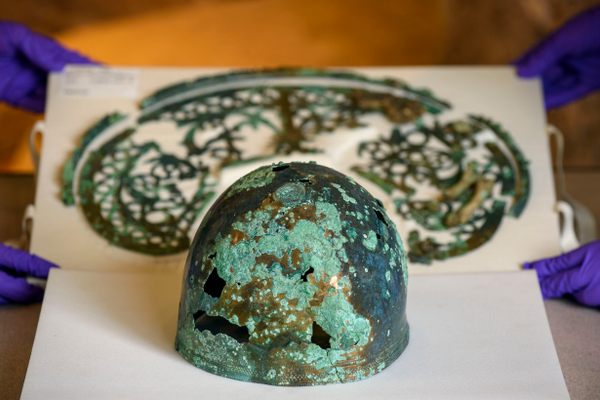Found in the Trash: The Roman Graves of Two Unfortunate, Legless Men
Something very bad happened here.

Someone had a vendetta. This was one of the many thoughts that circled in the mind of archaeologists when they found the bones of two men with their legs chopped off and heads bashed in Cambridgeshire, England.
They were working at the site in advance of a major road construction project when they found the human remains in a gravel pit-turned-garbage dump. The two men were positioned next to each other in the shape of the letter T and their cut bones were placed beside them in their graves. Over 164 feet away, archaeologists unearthed the bones of another dismembered person, with no pelvis, in a Roman well.
“Somebody really, really didn’t like these guys,” said Jon House, a senior archaeologist at MOLA Headland Infrastructure to The Guardian.
Kasia Gdaniec, a Cambridge county council senior archaeologist, told the Guardian she suspects that their brutal deaths were meant to send a message. “Was it to keep them in their graves and stop them from running away? Or had they tried to run away and was this a punishment—and a warning to everyone else not even to think of it?”
As for whether these people could be linked to the Roman defensive ditch also found at the site, Gdaniec believes so. “The Romans arrive, the people who were here are completely subjugated, everything changes and is never the same again. We are not seeing trade and peaceful co-existence here, we are seeing enslavement.” It possible, she theorizes, when these human were alive they were part of many forced to farm for the Romans.
House thinks the bone positioning might be the clue to this mystery.
“The practice of repositioning leg bones, as seen in a couple of graves recently discovered, is very rare and unusual. Further research is required but it would appear that these individuals were subjected to extreme violence … the possibility remains that this was motivated by beliefs.”















Follow us on Twitter to get the latest on the world's hidden wonders.
Like us on Facebook to get the latest on the world's hidden wonders.
Follow us on Twitter Like us on Facebook